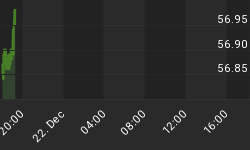Our long-term outlook on the euro remains more positive than that of many market participants. There are numerous reasons for our view, amongst others because it is more difficult to print and spend money in the eurozone. Fiscal coordination is rapidly improving in the eurozone, addressing the euro area's key deficiencies. Since the announcement of the $1 trillion credit line less than 3 weeks ago, Spain, Portugal and Italy have all passed substantial fiscal consolidation measures. Germany is also seizing the opportunity, proposing to reform labor markets.
That said, the market is demanding more substantial changes that not only cut costs, but provide a catalyst for future growth. To achieve this, true reform of the labor markets is needed, including increasing the retirement age. Germany may be the leader in imposing austerity, but the country's bizarre approach to capital market reform is not inviting future investments.
Further, strains on the banking system in Europe are increasing. The largest Spanish banks are relatively strong, with the vast majority of their business outside of Spain (much of it in Brazil); however, their funding is also dependent on international markets - recently, BBVA, Spain's 2nd largest bank, appears to be shunned from U.S. commercial paper markets, possibly depriving the bank of a source where $1 billion in funding has previously come from. Central banks can provide assistance for funding shortfalls, but it highlights the fact that the Spanish government needs to be far more aggressive in cleaning up the banking sector; there needs to be an integrated approach to addressing the ills of the many small regional banks in Spain (cajas), not the sporadic government takeover of the occasional failed bank. As an important step, the Spanish prime minister has set a deadline for the end of June for the cajas to clean up balance sheets and ask for state money, if needed.
The achilles heel in Europe is the banking system: since the beginning of the crisis, European banks have been slow to raise capital and mark down investments. While the European Central Bank (ECB) can provide liquidity, the ECB cannot address solvency issues. Keeping zombie banks alive is not a good solution, but would be workable (likely leading to Japanese-style slow growth); however, this option is a precarious one when banks become too big to fail. Spain continues to issue debt at an increased rate, rewarding risk friendly investors with higher yields. However, in the absence of an integrated approach to resolving banking issues, even a country like Spain could get overwhelmed. If that happens, the bailout package prepared by eurozone finance ministers may well be called to the test; except that such a test will go beyond helping the weaker governments, and would need to provide direct assistance to the failing banks, raising the stakes and cost of any bailout.
All of this requires far more assertive leadership than we have seen to date. Our support for the euro is not unconditional. Having said that, during the month of April, with all the limelight on the euro, the worst performing currency versus the U.S. dollar was not the euro, but actually the Australian dollar. We have argued that while we like the Australian dollar (Australia's resource dependent economy is a prime beneficiary of global reflationary efforts), the challenge is that "everyone else" likes it too, thus making it more vulnerable in a downturn.
We expect another "shock and awe" response from Europe. Such a response should be beneficial to those currencies that have suffered the most this month; as a result, we have increased our Australian dollar position. With regard to the euro, we have now become more cautious. While we do not consider ourselves technicians, one has to respect the dynamics created by market forces; in any case, however, the Australian dollar is likely to react more violently to the upside then the euro if and when a recovery does happen.
Talking about market dynamics, the Japanese yen has been a focus of our attention lately. When we dropped the yen as a hard currency early this year (Jan 7: Yen no longer Hard Currency), we cited a government that has found its focus again, able to spend money and exert more pressure on the Bank of Japan. Little did we know how quickly this new government's effectiveness and credibility would fizzle; in the absence of a strong government in Japan, market forces may play out once again, encouraging consumers to save more, which we consider to be a positive for the yen. With a less interventionist government, we may include the yen yet again in our hard currency strategy. That said, long-term, Japan may be required to access foreign markets to fund its deficit; this story will require constant monitoring and assessment.















